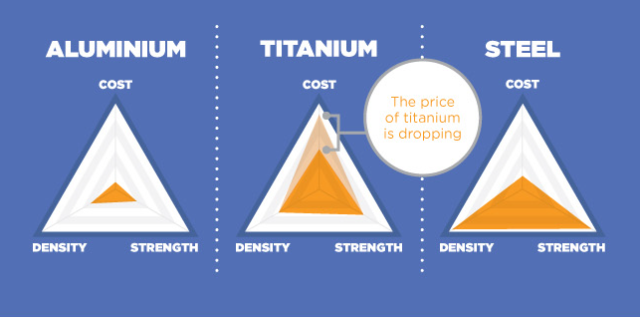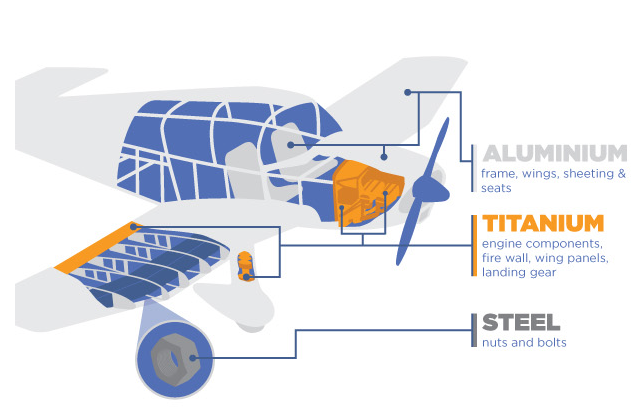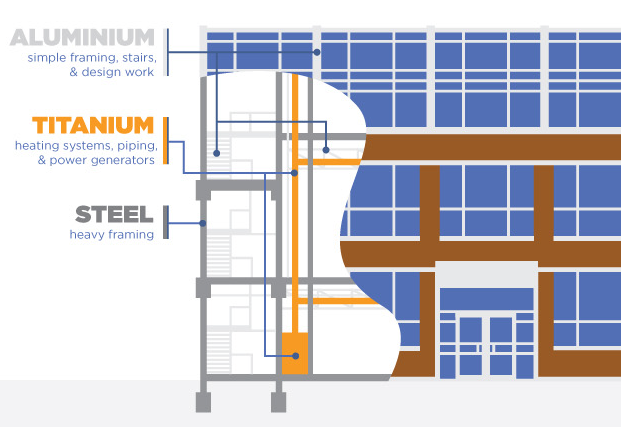Introduction
The strength to weight ratio of a metal can determine whether or not it can be used for specific applications. For industries such as civil, aerospace, and mechanical engineering, these ratios will make or break the opportunity to use a specific metal. The final factor in deciding what products and how much of them to use is cost.
Titanium has been very popular over the years and its properties are superior to a lot of other metals. It has not been extensively used mainly due to its high cost; its high functionality in aerospace and military applications has improved its use and desirability however.
The key determining factors in the type of metal to use for a specific project are the strength of the metal, its density or weight and the cost. Titanium is a highly coveted metal due to its near perfect strength to weight ratio and so is one of the most applicable metals on the market.

Figure 1. Comparitive Chart of titanium, steel and aluminium
Aircraft Materials
Aluminium is the primary metal utilised in aircraft today as it is light, workable and cost-effective. Certain stronger alloys of aluminium are excellent choices to reduce emissions and save on fuel. Even though titanium is more suited for aerospace applications, its high cost deters it being used and aluminium is more popular. In airframe and engine applications where engine speed, strength and power are factors, titanium is more effective. Steel is stronger thantitanium, but due to its weight, it is not used for most aerospace applications.

Figure 2. Aerospace applications
Building Materials
Steel is highly suited for multilevel construction applications. Steel has a low price and high strength, making it best suited for such constructions. In cases where structural weight is significant and for design architectural work, aluminium is suitable. Titanium is used in piping, due to its high corrosion resistance, for HVAC systems and where weight and strength are addressed such as large roofs.

Figure 3. Building Materials
Conclusion
Though the high cost of titanium has deterred its use in most applications in the past, the fact that titanium is the fourth most abundant metal on the planet is now being realized. Although the price may be on the higher side when compared to other metals, it is slowly becoming more readily available and finding more applications.

This information has been sourced, reviewed and adapted from materials provided by wilsonpipeline Pipe Industry Co., Limited.
For more information on this source, please visit www.wilsonpipeline.com .









0 comments:
Post a Comment